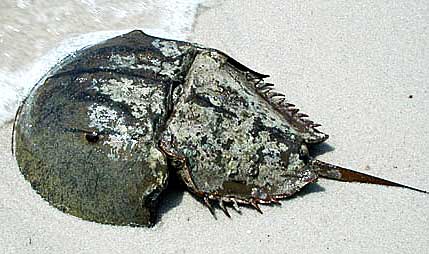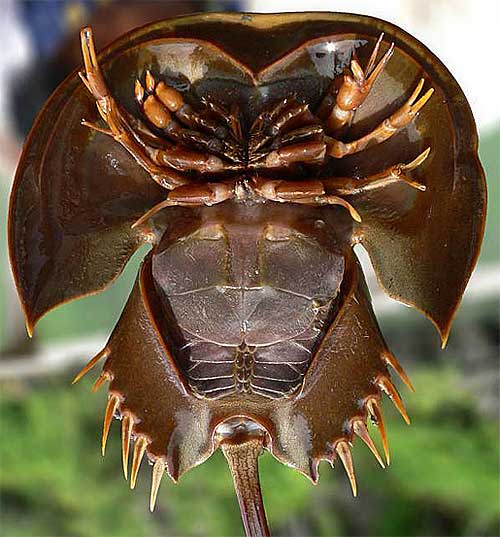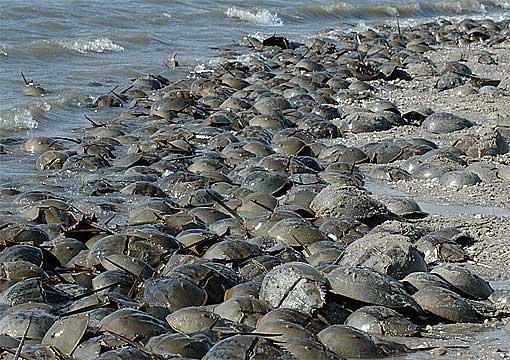Horseshoe Crab – The Living Fossil

Horseshoe crabs are not crabs or crustaceans and are only very distantly related to lobsters and crabs. They are more closely related to scorpions and spiders. They are marine chelicerates, the only living representatives of the class Merostomata and the only chelicerates with compound eyes like bees and other insects. These animals are often referred to as “living fossils” because they have changed so little from types that lived over 400 million years ago. No one can say with any certainty how they have been able, with “no modern improvements” to survive in competition with the diversity of crustaceans and other animals that are more highly evolved.

Their stability may result from lack of specialization. They can inhabit shallow sandy or muddy shores. They can walk or swim by flapping their abdominal appendages. They can eat about anything they can find burrowing in the sand. They have six pairs of legs, two in the front for pinching and seizing prey and five more for walking. Their shell helps for protection and their tail helps them put themselves upright if they are turned upside down.

Sometimes horseshoe crabs can be seen piling up along the shore where they arrive to mate. Once very numerous, their numbers have gone down partly due to commercial uses. They are collected, dried and ground to be used as fertilizer and as pig and chicken feed. However, this practice is not as common as it once was. They are also used by the fishing industry as bait to catch eels and conch. In Asia the eggs are eaten, but only during the parts of the year when they are not toxic. Some birds are affected by the population of horseshoe crabs because they feed on their eggs.
